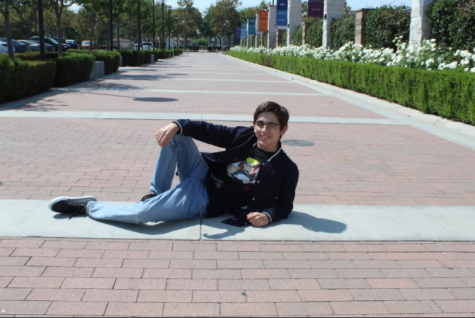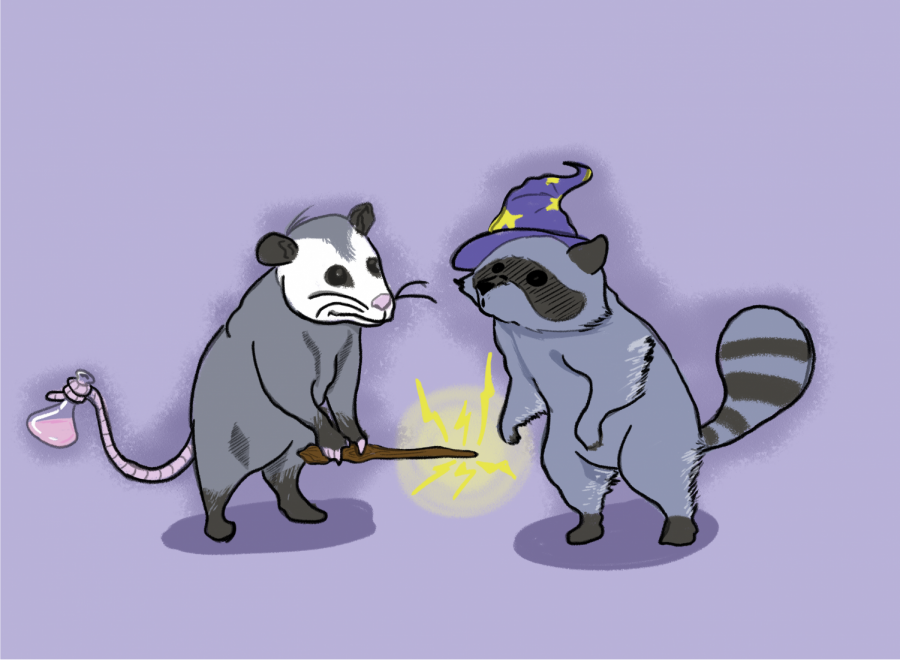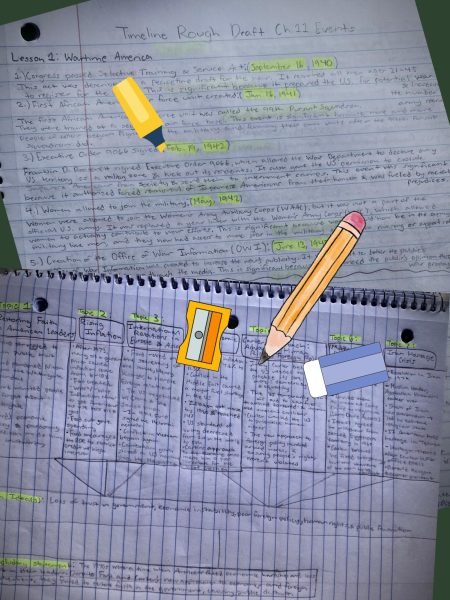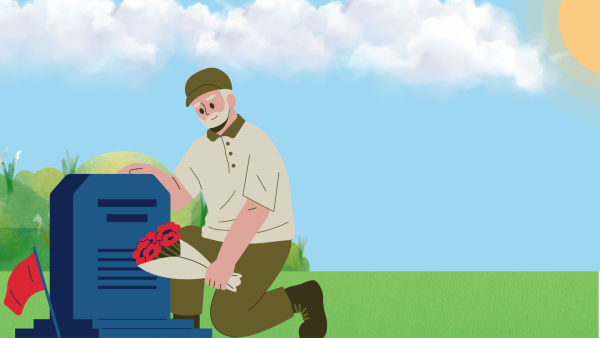MCHS’ urban wildlife: Students’ animal friends
An opossum and raccoon are two examples of urban wildlife you might see on the MCHS campus.
Walking down the black pavement of what is Middle College’s bungalow campus, you see something scuttering around, through, and out the corner of your eye. “I’m probably just tired,” you think for a split second until your glance over changes that thought. Now staring underneath the school’s bungalow you find yourself making eye contact with an urban opossum.
Urban wildlife is nothing new and certainly has been here at MCHS for quite some time now. While this year would be the first in recent time many students would remember attending classes with an opossum, animals such as cats, squirrels, raccoons, bats, and even owls have, on chance, been spotted from time to time on (or below) our bungalow campus with the possibility for more only increasing.
As Alex Brown from Pewtrusts.org writes, “‘Generalist’ species such as deer, coyotes and raccoons, which thrive in many different conditions, have found cities especially welcoming. Many have been forced out of their natural habitat by development, and an abundance of food and lack of predators make cities a good home.”
Therefore, urban wildlife roaming through MCHS is not an uncommon sight to the students and staff. Being an open campus, MCHS is prone to having the occasional cat or raccoon stroll in and taking a bite of some forgotten food. Usually, they attempt to be sneaky yet they usually are found out by a student on campus.
One such student would be junior Gloria Parra-Diaz.
“Around September 1st or the 2nd, my mom dropped me and my sister off early in the morning as usual. As we walked toward the building, I turn to my left facing Hariri’s class to see a pretty big raccoon just strolling under the bungalows. He was pretty big to be honest. I never really saw a raccoon that close but it was a pretty neat way to start off my day,” Parra-Diaz said.
However, this isn’t an isolated wild animal sighting, as confirmed by an alumni of MCHS, Walter Uriostegui, who has also had his own encounter with the wildlife during his time here on the bungalow campus.
“I’ve seen opossums, cats, and once an owl. All from safe distances,” he said. Uriostegui goes on to describe a close encounter with a raccoon he joined up with one day: “I liked to watch from afar except the one time I followed a raccoon I named Matpatcha around for about an hour and offered it a piece of bolillo when it finally noticed me. Luckily, I was not bit, but it was a magical experience.”
It is certain to say that the urban wildlife really brightens the day of any MCHS student who happens to have a chance encounter with one of them. While the students benefit from the experience, it of course goes without reiteration, that almost all animals have a fear of humans. Wildlife, urban or not, may then flee or stand their ground when a human walks over. This is of course why many choose to defend their own homes from these four-legged neighbors.
On this topic, here is what Parra-Diaz had to say.
“I think it overall depends on what type of animal it is. Of course an animal is an animal, it’ll go where its heart desires but as far as keeping them away, I don’t think we should,” she said.
To specifically get rid of wildlife, many attempt to capture the animal in their yard with plans to relocate it. Not only does this not really solve the problem, it is subject to the Trapping Laws and Regulations detailed by the State of California-Department of Fish and Wildlife.
“All furbearing and nongame mammals that are legal to trap must be immediately killed or released. Unless released, trapped animals shall be killed by shooting where local ordinances, landowners, and safety permit. This regulation does not prohibit employees of federal, state, or local government from using chemical euthanasia to dispatch trapped animals. Trapped animals must be euthanized or released immediately on site. Relocation of trapped wildlife is prohibited.” ( Use of Traps Cal. Penal Code §465.5 (g)(1))
While you are only legally allowed to trap certain animals, you must dispatch them in the event of capture, or immediately release them (same if you caught a different animal by accident).
Upon having this information shown to them, Parra-Diaz wasn’t in favor.
“I think it’s wrong for those who are licensed trappers to kill any wildlife they capture. It’s understandable if they capture them to help them out or see if the animal is struggling. But as far as ending the animal’s life doesn’t sit right with me,” she said.
As for treating the animal, there are thankfully wildlife rehabilitators who can help injured or orphaned animals that may have been found, rather than captured as a more humane option, although this wouldn’t keep any wildlife away from the area.
It’s clear that the students of MCHS definitely feel sympathetic for the animals (don’t we all?) and having them around is definitely a treat.
As many students are aware, MCHS will be returning to the B-building campus and leaving the bungalows behind for the most part. Yet, most of the wild animal friends found on campus were found in the bungalow region. Whether they’ll move along with the students or stay in the old area is unknown.
But, we do have our own inferences much like Parra-Diaz: “I think we will have a few critters here and there that will come and visit. I don’t think it would affect the urban critters around, in fact. I think we may get to see more of them.”
It should go without saying that moving to the new building will be a big change, but there is still some hope that our furry friends may tag along for the transfer as they definitely bring their own special part to our day as remarked by alumni Uriostegui: “I find it special when I see an animal out in the city. With life being so busy, it’s nice to have a break and watch an animal do something interesting that isn’t sitting at a computer.”

I love drawing in my sketchbook, deep-diving into random topics, and I’ve 100%’d two lego games in the past (Lego Indiana Jones ½ and The Lego...





































